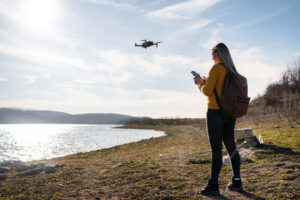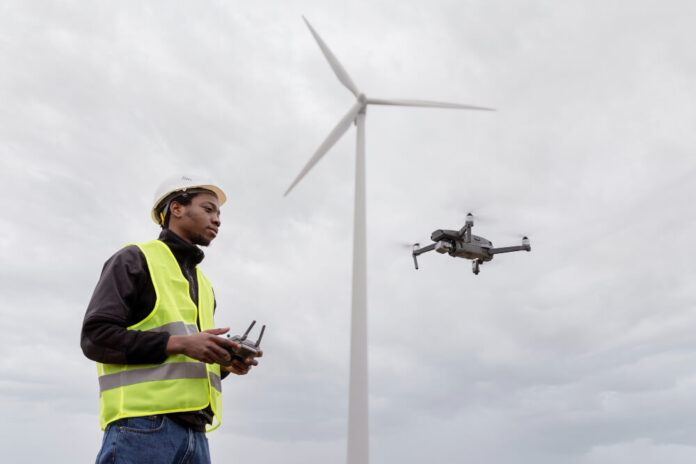Drones, once considered a futuristic novelty, are now at the forefront of innovation across multiple industries. These unmanned aerial vehicles (UAVs) have evolved from recreational gadgets to essential tools, transforming the way businesses operate and delivering new levels of efficiency, accuracy, and accessibility.
Today, drones are redefining possibilities in sectors such as agriculture, logistics, construction, and emergency response. Here’s how drones are making a substantial impact and why companies around the world are investing in this technology to stay competitive.
Emergency Services and Disaster Relief: Saving Lives with Speed and Accuracy
In emergency situations where every second counts, drones are proving to be invaluable tools. They can quickly reach remote or hazardous locations, providing emergency responders with real-time images and data that aid in making critical decisions. In search and rescue missions, drones equipped with thermal imaging can locate missing persons even in low-visibility conditions. They can fly over dangerous terrains, such as mountains or flooded areas, allowing responders to plan safe and effective rescue operations.
Drones are also used in disaster relief efforts, delivering supplies and assessing damage after events like hurricanes, earthquakes, or wildfires. An American drone company specializing in emergency applications can provide relief organizations with drones that monitor conditions on the ground and identify areas needing immediate attention. By speeding up the response time and improving situational awareness, drones are saving lives and enabling more efficient, organized recovery efforts.
Agriculture: Precision Farming and Crop Management
Drones are playing a pivotal role in modernizing agriculture, introducing precision farming techniques that increase productivity while conserving resources. With advanced imaging technology, drones can capture detailed aerial views of farmland, providing insights into soil health, crop growth, and areas needing attention.
By equipping drones with multispectral sensors, farmers can assess plant health and detect issues like disease or water stress early on. This data allows for targeted interventions, such as applying fertilizers only where needed, which reduces waste and boosts crop yield.
Beyond imaging, drones are also being used for precision spraying, delivering pesticides or nutrients more evenly across large fields than traditional methods. This reduces chemical usage and minimizes exposure risks for farm workers. For farms aiming to maximize efficiency while being environmentally responsible, drones have become indispensable tools that contribute to higher yields, lower costs, and a more sustainable approach to agriculture.
Construction: Surveying and Monitoring
In construction, drones offer a fast, cost-effective way to survey sites, monitor progress, and ensure safety. Traditional surveying methods can be time-consuming and expensive, especially for large-scale projects. Drones equipped with high-resolution cameras and LiDAR (Light Detection and Ranging) technology can survey large areas quickly, producing accurate 3D maps and topographical data essential for planning. This data helps construction companies identify potential challenges before they arise, reducing delays and keeping projects on track.
Drones are also invaluable for tracking progress and inspecting structures as they’re built. Regular aerial images provide visual records that can be shared with stakeholders to keep everyone informed. Moreover, drones help identify safety hazards by giving a bird’s-eye view of the site, allowing teams to implement necessary precautions without putting workers in risky situations. By reducing survey time, improving accuracy, and enhancing safety, drones are revolutionizing the construction industry’s approach to project management and risk mitigation.
Logistics and Delivery: Faster and More Efficient Distribution
Logistics is one of the most exciting fields for drone innovation, particularly as companies explore faster, more flexible delivery options. Drones offer the potential to improve fulfillment services by delivering goods quickly and directly, especially in areas that are hard to access by traditional means. E-commerce giants and major logistics firms are piloting drone delivery services for small packages, which could dramatically reduce delivery times for items like food, medicine, and essential supplies. For rural or disaster-stricken regions, drones can provide a lifeline by delivering necessary resources in a timely manner.
Aside from last-mile delivery, drones can streamline warehousing operations. Inventory drones, for instance, can scan and locate products in large warehouses, making inventory management faster and more accurate. As regulations and technology continue to advance, drones are poised to play a central role in reshaping logistics, reducing delivery times, lowering costs, and minimizing environmental impact.
Media and Entertainment: Expanding Creative Possibilities
In the media and entertainment industry, drones have redefined the way stories are told and content is created. Drones can capture breathtaking aerial shots, offering unique perspectives that were once only achievable with expensive helicopter setups. In film production, drones are used to film high-speed action scenes and sweeping landscape shots, creating a sense of immersion for audiences. With drones, photographers and filmmakers can push creative boundaries without the logistical challenges of traditional aerial filming methods.
Drones are also used in live broadcasting, particularly in sports events and news coverage, where they provide real-time aerial views of the action. They’re capable of tracking fast-moving subjects, delivering dynamic, on-the-fly footage that enhances the viewer’s experience. By offering cost-effective, versatile aerial filming capabilities, drones are opening up new possibilities in storytelling, giving creators more tools to bring their visions to life.
Environmental Conservation: Monitoring and Protecting Ecosystems
Drones have become powerful allies in environmental conservation, aiding efforts to monitor and protect ecosystems worldwide. Conservationists use drones to survey large areas, such as forests, wetlands, and coastlines, gathering data that helps assess biodiversity, track animal populations, and identify changes in land use. With the ability to cover difficult terrains without disturbing wildlife, drones provide valuable insights into habitat health and the impacts of human activity.
In addition to monitoring, drones are used for anti-poaching efforts, especially in wildlife reserves. Equipped with thermal cameras and GPS, drones can patrol vast areas and detect poachers before they cause harm. For ocean conservation, drones capture images of marine life and monitor water quality, helping researchers address issues like pollution and coral reef degradation. By providing data that informs sustainable practices, drones are supporting global efforts to protect and preserve our environment.
Real Estate: Enhancing Property Marketing and Inspections
The real estate industry has embraced drones for their ability to create high-quality marketing content and facilitate property inspections. Aerial views allow real estate agents to showcase properties in ways that weren’t possible before, offering potential buyers a comprehensive look at the property, surrounding landscape, and nearby amenities. For large properties like farms, estates, or commercial buildings, drone footage can highlight features more effectively than ground-level photos.
Beyond marketing, drones simplify property inspections, allowing professionals to examine rooftops, facades, and other hard-to-reach areas without the need for ladders or scaffolding. This capability is particularly valuable for pre-purchase inspections, insurance assessments, and maintenance checks. By improving both marketing reach and operational efficiency, drones are transforming how real estate professionals engage clients and manage properties.
Drones are no longer confined to the realm of hobbyists; they are now indispensable tools across a wide array of industries. From enhancing agricultural productivity and construction safety to revolutionizing logistics, emergency response, and media, drones have become central to modern innovation.

Companies, including prominent American drone companies, continue to develop specialized drones for various applications, pushing the boundaries of what these devices can accomplish. As technology and regulations evolve, drones will undoubtedly take on even more complex roles, making them a vital component of industries looking to increase efficiency, reduce costs, and gain competitive advantages in a rapidly advancing world.


